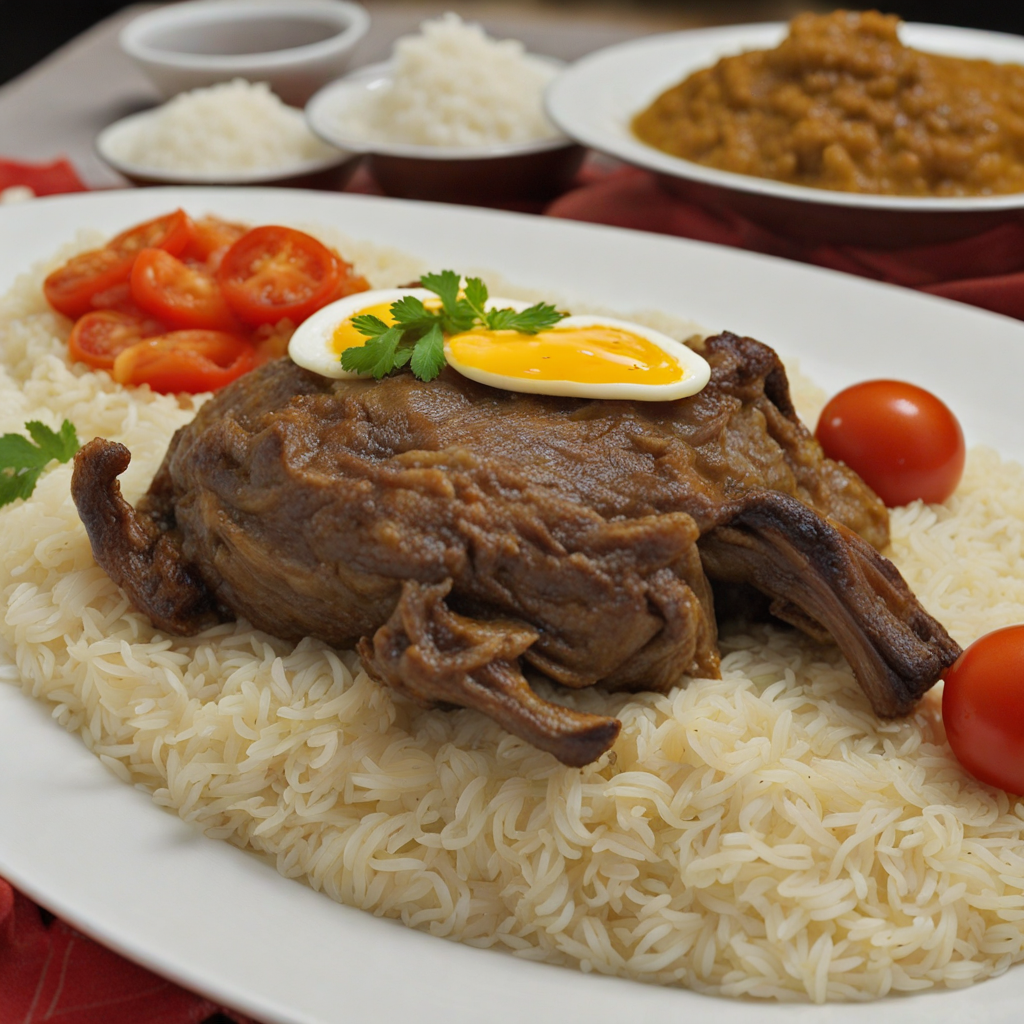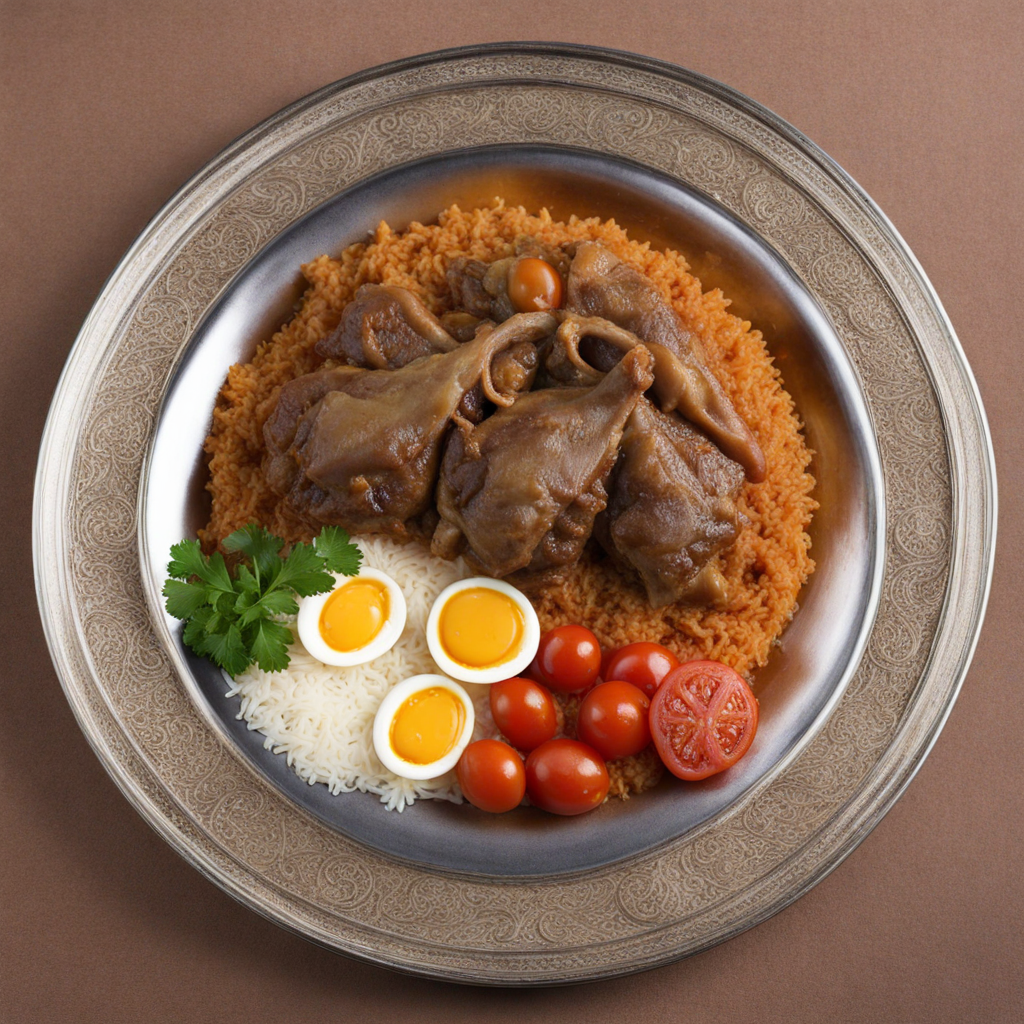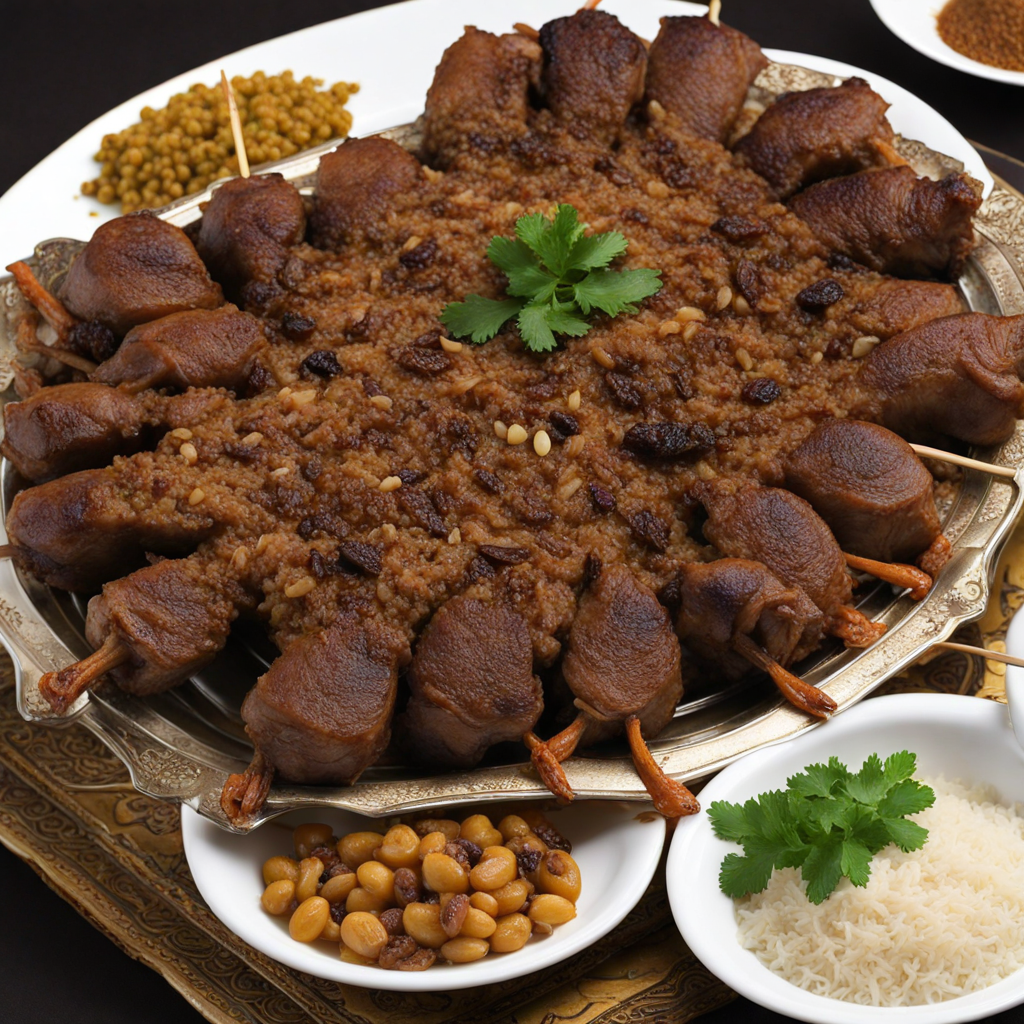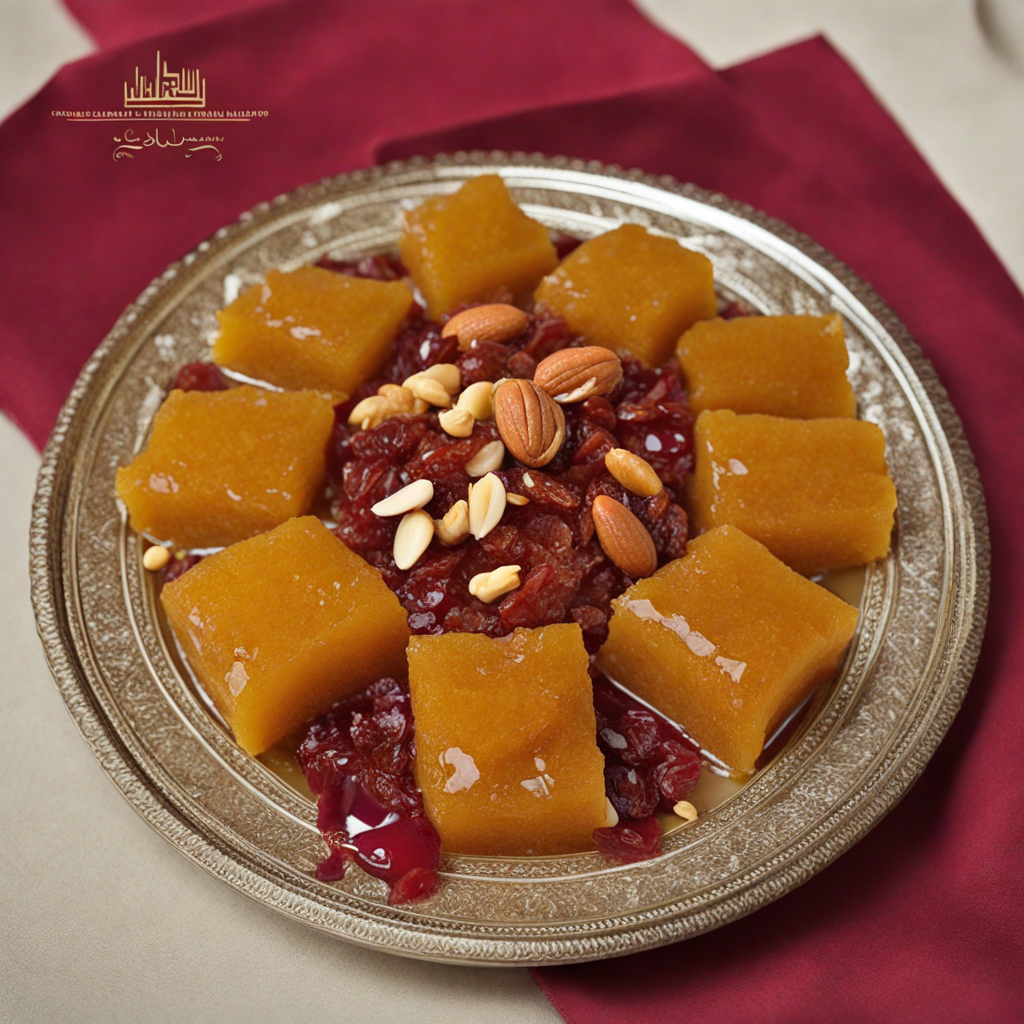Ghoozi
Ghoozi is a traditional Bahraini dish that embodies the rich flavors and culinary heritage of the region. This exquisite dish typically features tender, slow-cooked lamb or chicken, marinated with a blend of spices that may include cardamom, cinnamon, and saffron. The meat is often cooked to perfection, resulting in a melt-in-your-mouth texture that is both savory and aromatic. The use of high-quality ingredients and spices is essential to achieving the authentic Ghoozi flavor, which offers a unique taste experience that is both comforting and indulgent. Accompanying the succulent meat, Ghoozi is served over a bed of fragrant basmati rice, which is often infused with spices and sometimes mixed with raisins or nuts. The rice absorbs the rich flavors of the meat and spices, creating a harmonious blend that elevates the dish. A sprinkle of toasted almonds or pine nuts adds an extra layer of texture and nuttiness, making every bite a delightful experience. The visual appeal of the dish, with its vibrant colors and aromatic spices, makes it a feast for the senses. Ghoozi is not just a meal; it is often the centerpiece of celebratory gatherings and family feasts in Bahrain. Traditionally, it is served on a large platter, encouraging communal dining and sharing, which fosters a sense of togetherness. The dish is typically accompanied by a variety of side dishes, such as fresh salads, Arabic flatbreads, or yogurt, which complement its rich flavors. For those seeking to explore new culinary horizons, Ghoozi offers a delicious journey into the heart of Bahraini cuisine, promising an unforgettable taste that lingers long after the last bite.
How It Became This Dish
A Culinary Journey Through غوزي: The Traditional Bahraini Dish #### Origins of غوزي غوزي (Ghozi) is a traditional dish that has become a beloved staple in Bahraini cuisine, reflecting the rich tapestry of the island's history and cultural influences. The origins of Ghozi can be traced back to the Arabian Peninsula, where various cooking techniques and ingredients have melded over centuries. The dish is thought to have roots in the nomadic lifestyle of the Bedouins, who relied on simple yet flavorful meals that could sustain them in the harsh desert environment. Historically, Bahrain served as a crossroads for trade, connecting the Arabian Peninsula with Persia, East Africa, and even India. This location enabled the exchange of spices, cooking methods, and culinary traditions. As a result, Ghozi is not merely a standalone dish; it embodies a fusion of flavors and techniques derived from various cultures. The dish typically consists of marinated lamb or goat meat, slow-cooked until tender and infused with spices. It is often served with rice, which has absorbed the rich flavors of the meat, creating a harmonious blend that is both comforting and satisfying. #### Cultural Significance Ghozi holds a special place in Bahraini culture, often associated with celebrations and gatherings. It is a dish that brings families and friends together, symbolizing hospitality and generosity. In Bahraini households, Ghozi is commonly prepared during significant occasions such as weddings, Eid celebrations, and communal feasts. The preparation of Ghozi is not just about cooking; it is a communal activity that often involves multiple generations of women coming together to prepare the meal, sharing stories, laughter, and culinary secrets. The significance of Ghozi as a ceremonial dish is further emphasized during the holy month of Ramadan. As families break their fast, Ghozi often graces the dining table, accompanied by dates and fresh salads. The dish serves not only as a source of nourishment but also as a reminder of cultural traditions and the importance of community. #### Ingredients and Cooking Techniques The traditional recipe for Ghozi incorporates a blend of spices that reflect Bahrain's diverse culinary heritage. Common spices include cumin, coriander, cardamom, and cinnamon, which lend a warm and aromatic flavor to the dish. The marination process is crucial, as it allows the meat to absorb the spices, enhancing the overall taste. The cooking method for Ghozi often involves slow-roasting or steaming the meat. This technique is reminiscent of ancient practices where meat was cooked underground in pits or wrapped in leaves to retain moisture and flavor. Today, while modern cooking appliances may be used, the essence of slow cooking remains a vital aspect of Ghozi's preparation. In addition to the meat and spices, Ghozi is typically served with rice, which is often flavored with saffron or turmeric, giving it a vibrant yellow hue. The rice absorbs the juices and spices from the meat, creating a delightful interplay of flavors. Some variations of Ghozi may include roasted vegetables or nuts, adding an additional layer of texture and taste to the dish. #### Evolution Over Time As Bahrain has evolved, so too has the dish of Ghozi. In the past, Ghozi was primarily a rural dish, prepared in homes using traditional methods. However, with the advent of modernization and globalization, Ghozi has found its way into restaurants and catering services, often adapted to suit contemporary tastes. The advent of tourism in Bahrain has also played a role in the evolution of Ghozi. As visitors flock to the island, they seek authentic culinary experiences, prompting local chefs to showcase traditional dishes in innovative ways. Some restaurants now offer Ghozi as part of a modern tasting menu, presenting it alongside other traditional Bahraini dishes in a refined manner. Additionally, the influence of international cuisines has led to creative variations of Ghozi. Chefs have experimented with different types of meat, such as chicken or even seafood, to cater to diverse palates. While these variations may deviate from the traditional recipe, they serve to highlight the adaptability of Bahraini cuisine and its ability to incorporate new elements while preserving its essence. #### Ghozi in Contemporary Culture In contemporary Bahrain, Ghozi remains a beloved dish, celebrated not only for its flavor but also for its cultural significance. Food festivals and culinary events often feature Ghozi as a highlight, showcasing the skill and artistry involved in its preparation. Furthermore, social media platforms have allowed home cooks and chefs alike to share their Ghozi recipes, fostering a sense of community and preserving culinary traditions for future generations. Moreover, Ghozi transcends mere sustenance; it has become a symbol of Bahraini identity. In a rapidly changing world, where globalization threatens to dilute local cultures, dishes like Ghozi serve as a potent reminder of Bahrain's rich heritage. Efforts are being made to document and preserve traditional recipes, ensuring that the story of Ghozi continues to be shared and celebrated. #### Conclusion In conclusion, غوزي (Ghozi) is much more than a dish; it is a culinary narrative that encapsulates the history, culture, and traditions of Bahrain. From its origins in the nomadic lifestyle of the Bedouins to its contemporary iterations in restaurants and homes, Ghozi represents the resilience and adaptability of Bahraini cuisine. As it continues to evolve, Ghozi stands as a testament to the enduring power of food to connect people, celebrate culture, and preserve history. Whether served during a festive occasion or enjoyed in the intimacy of a family gathering, Ghozi remains a cherished symbol of Bahraini hospitality and culinary artistry.
You may like
Discover local flavors from Bahrain







